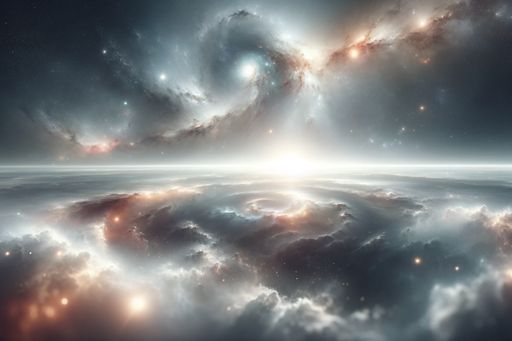The James Webb Space Telescope's Continued Gifts
The James Webb Space Telescope has been providing miraculous visions from the skies, allowing us to see distant galaxies, nebulae, and more. This article discusses the success of the telescope, its capabilities, and the exciting discoveries it has made so far.

The Unfolding Process and Success of the James Webb Space Telescope
In 1989, NASA started considering a successor to the Hubble Telescope. The James Webb Space Telescope (JWST) was designed to have gold-plated lenses that could detect infrared light, expanding our view into the universe. The JWST is much larger than the Hubble and had to be folded up to fit into existing rockets. The unfolding process was complex and required more than 300 single-point movements to go exactly as planned.
Despite the challenges, the JWST's launch in 2021 went incredibly well. Scott Willoughby, who oversaw the telescope's construction, stated that the entire process went as close to perfect as anyone could have imagined. The meticulous preparation and practice for various scenarios paid off, resulting in a successful mission. After seven months of unfolding and calibration, the JWST reached its orbit one million miles from Earth.
The Challenges of Infrared Observation and Scientific Discoveries
In order to detect faint infrared signals from space, the JWST had to reach temperatures as low as minus 400 degrees. A large sun shield was deployed to protect the telescope from the sun's heat, which could interfere with infrared observations. Once the telescope was ready, scientists at NASA's Space Telescope Science Institute began analyzing the data it collected.
One of the main objectives of the JWST is to study distant planets and their atmospheres. By analyzing how a planet's atmosphere affects the light passing through it, scientists can gain insights into its composition. The JWST has already studied the atmospheres of multiple exoplanets, including K2-18 b, which was found to have carbon dioxide and methane, suggesting the presence of oceans.
The JWST has been delivering on its promises and providing valuable data to scientists. Its observations have allowed them to better understand the early universe and make discoveries that were once unimaginable. The telescope's success has exceeded expectations and continues to amaze with each new image captured.
Colorizing and Image Manipulation
There have been questions about the authenticity of the JWST's images, with some wondering if NASA manipulates or colorizes them. NASA image experts Joe DePasquale and Alyssa Pagan explained that the images are colorized to make them visible to the human eye. Different wavelengths of light are assigned different colors to create a representation of what we would perceive if we could see infrared light.
The colorizing process helps scientists interpret the data and highlight important features in the images. It allows them to present the information in a visually comprehensive way. The goal is to provide the truest representation of what the JWST captures, while still making it accessible and understandable to the general public.



